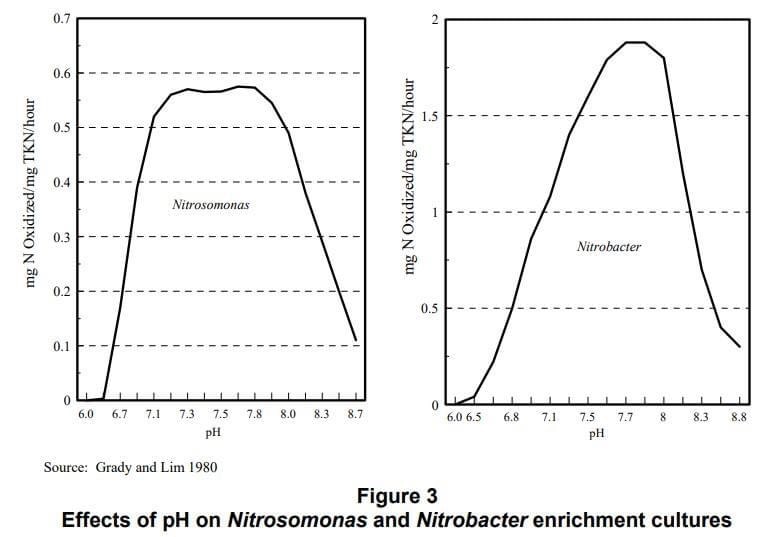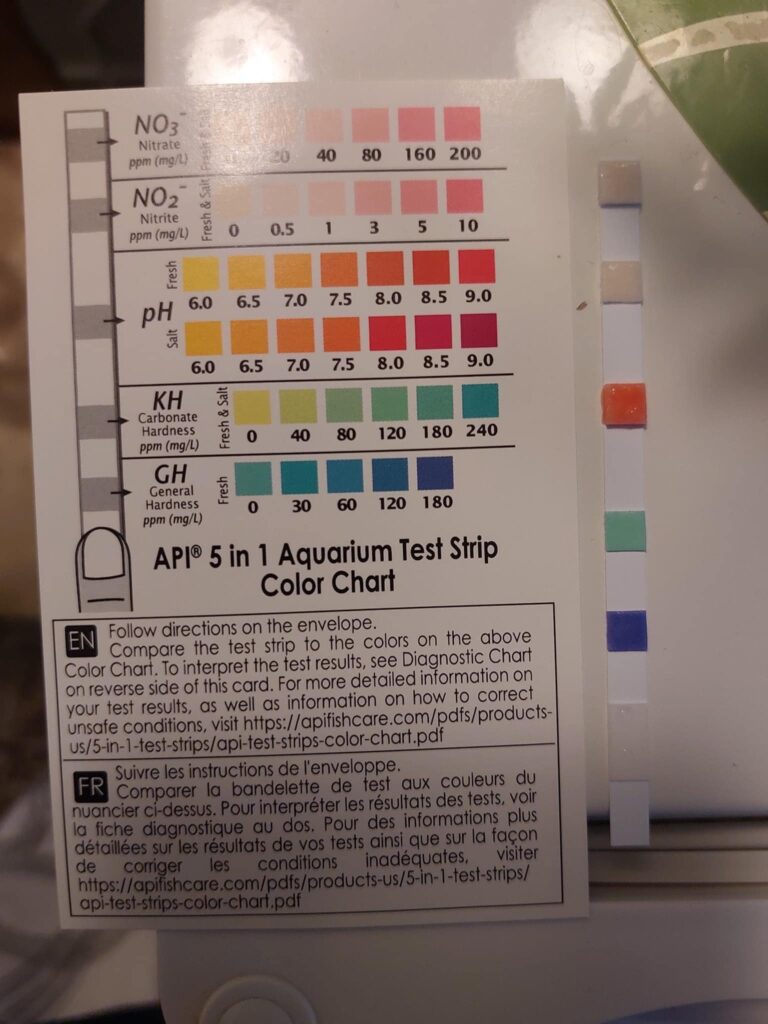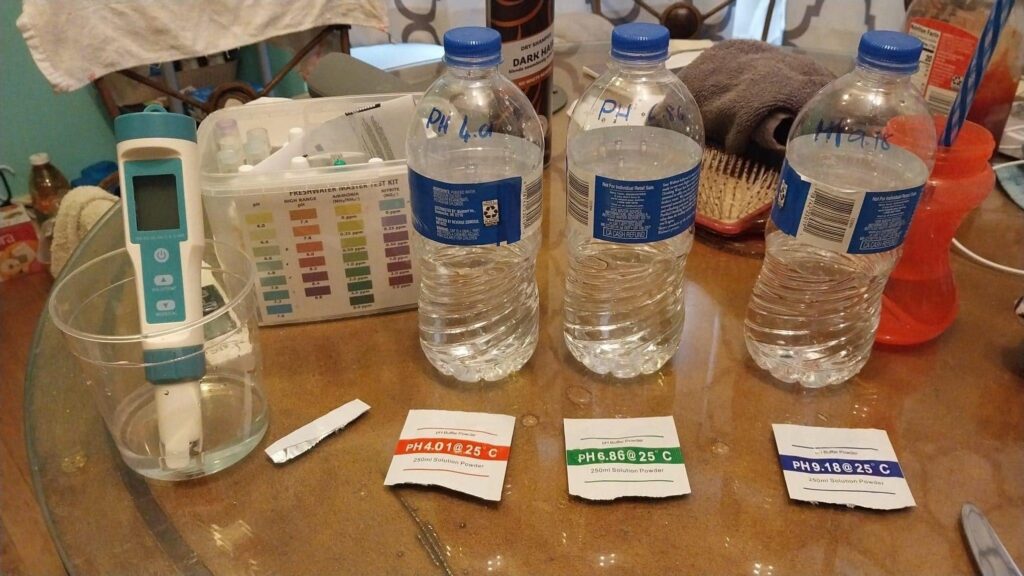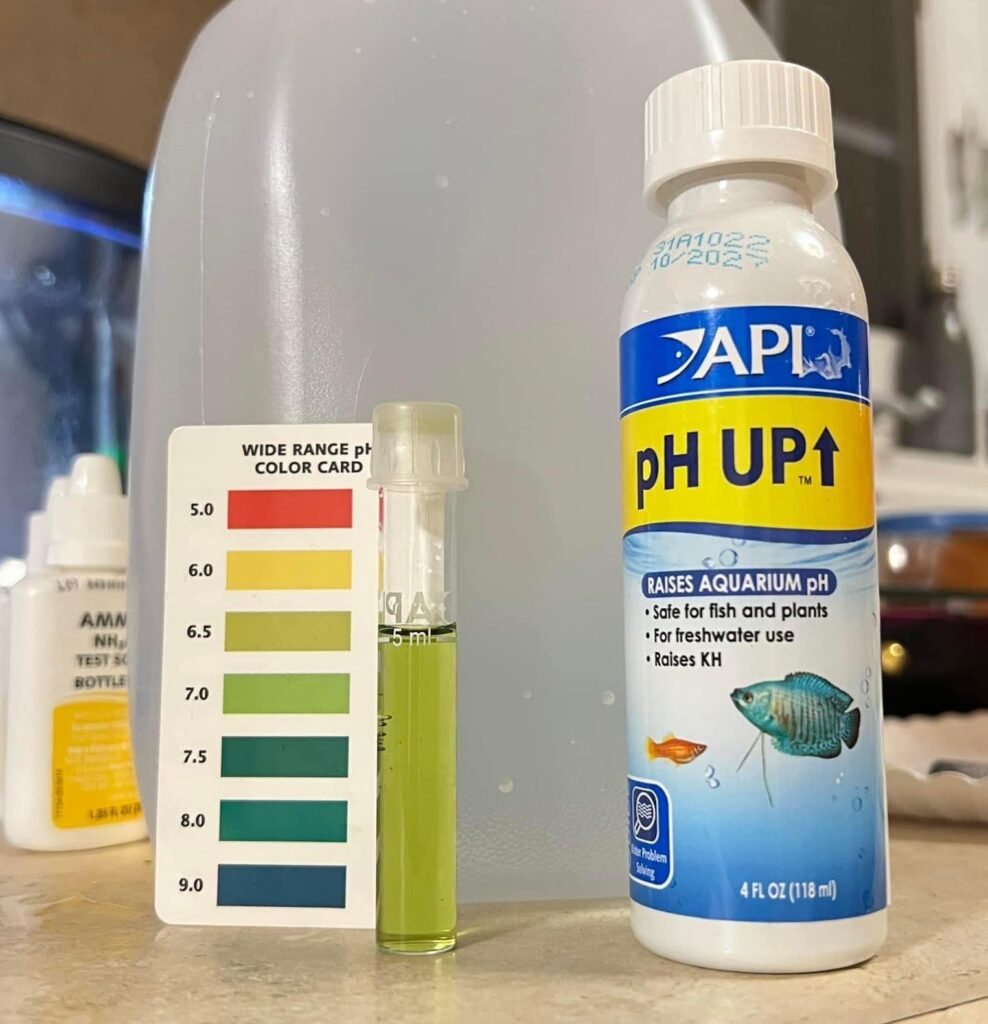You might have thought that your chemistry lessons in school were boring, but who knew that pH would become such a crucial factor in your aquarium?
The pH is one of the factors that determines the health and well-being of the aquatic life in your tank. Different aquarium species require different pH levels, so it ultimately determines who you can keep in your tank and how they thrive.
The natural chemical processes in your tank are in a constant state of flux, affecting your aquarium’s pH. From fish waste to plant and algae growth, even your choice of substrate and decorations can impact it.
So get ready to channel your inner scientist and learn how to maintain the optimal pH levels in your aquarium.
What is pH?
pH is the measurement of acidity or alkalinity of water, also known as basic. It stands for “potential of hydrogen” or “power of hydrogen”.
The pH scale ranges from 0 to 14, with 0 to 6 considered acidic, 7 considered neutral, and 8 to 14 considered alkaline. In everyday life, common acidic solutions include coffee, orange juice, and vinegar, while green tea is alkaline.
The pH scale is logarithmic, meaning that each number on the scale represents a tenfold difference in acidity or alkalinity compared to the previous number. For example, a solution with a pH of 6 is ten times more alkaline than a solution with a pH of 5, while a solution with a pH of 8 is a thousand times more alkaline than a solution with a pH of 5.
| pH Value | Hydrogen Ion Concentration | Example |
|---|---|---|
| 0 | 1.0 x 10^0 M | Battery acid, extremely acidic |
| 1 | 1.0 x 10^-1 M | Hydrochloric acid, stomach acid |
| 2 | 1.0 x 10^-2 M | Lemon juice, vinegar |
| 3 | 1.0 x 10^-3 M | Orange juice, soft drinks |
| 4 | 1.0 x 10^-4 M | Tomato juice, acid rain |
| 5 | 1.0 x 10^-5 M | Black coffee, distilled water |
| 6 | 1.0 x 10^-6 M | Milk of magnesia, baking soda |
| 7 | 1.0 x 10^-7 M | Pure water, neutral |
| 8 | 1.0 x 10^-8 M | Sea water, eggs |
| 9 | 1.0 x 10^-9 M | Baking soda, toothpaste |
| 10 | 1.0 x 10^-10 M | Milk, bananas |
| 11 | 1.0 x 10^-11 M | Ammonia solution |
| 12 | 1.0 x 10^-12 M | Soapy water |
| 13 | 1.0 x 10^-13 M | Bleach solution |
| 14 | 1.0 x 10^-14 M | Liquid drain cleaner, extremely alkaline |
The logarithmic formula used to calculate pH is:
- pH = -log[H+]
Water is composed of two hydrogen atoms and one oxygen atom, so its chemical formula is H₂O. At a molecular level, the concentration of hydrogen ions in a solution determines its acidity or alkalinity. More H+ than OH– make the solution more acidic, while fewer H+ than OH– make it more alkaline.
The Impact of pH on Aquatic Life
Tap water and aquarium water can contain impurities that may alter the concentration of hydrogen ions and cause fluctuations in pH levels. Due to the logarithmic nature of the pH scale, even a small change in pH can have a substantial impact on the aquatic life of your aquarium.
pH can affect everything from fish growth and breeding to causing stress or even death.
A pH range of 4 to 6.5, or 9 to 11, can lead to increased stress for your fish, while levels below 6.5 or above 9.5 can be fatal. Fish won’t breed below a pH of 5, and any fry born won’t survive.
It’s also important to note that the nitrifying bacteria responsible for the nitrogen cycle can die off if the pH falls below 6.5 or goes above 9.5, as per the Journal of Ecohydrology & Hydrobiology.
What’s the Ideal pH Level for an Aquarium?
The ideal pH level for your aquarium depends on the fish you keep. Most freshwater fish thrive at a pH range of 6 to 7.5, while saltwater fish prefer a higher pH of around 8. It’s more important to maintain a stable pH within the appropriate range rather than trying to achieve a specific number.
For example, Betta fish can tolerate a pH range of 5 to 9 without impacting their aggression levels, but most fishkeepers aim for a pH close to 7 for optimal conditions. Nitrifying bacteria, responsible for the nitrogen cycle, thrive at a pH of 7.7, and their activity slows down as the pH drifts away from this value.

What Are the Methods of Measuring pH?
There are several methods for measuring pH, including using pH indicator solutions, pH test strips, and pH meters.
pH Indicator Solutions
For most aquarium hobbyists, an aquarium testing kit provides a sufficient range and accuracy for pH measurement.
The API Freshwater/Saltwater Master Testing Kit are a popular option that provides accurate results for multiple parameters, including pH. It’s user-friendly and comes with detailed instructions (Freshwater Manual, Saltwater Manual).
Testing kits like the API kit use a testing solution to measure pH. Fill the provided test tube with a sample of your aquarium water (usually 5ml), then add 5 drops of the pH testing solution. The solution in the tube will change color based on the pH level of your water. To determine the pH level, simply compare the color change to the pH color chart included in the kit.

Testing Range
Aquarium pH ranges are typically narrow, with freshwater aquariums ranging from 6 to 8, and saltwater aquariums ranging from 7.5 to 9.
For increased accuracy, aquarium test kits are designed to test within this range in increments of 0.2. The API Aquarium pH Test Solution has a range of 6 to 7.6, while their Saltwater HIGH RANGE Test Kit measures between 7.4 and 8.8.
If you’re concerned your aquarium is beyond this range – or your testing kit is showing the maximum or minimum of the range, consider API Wide Range Test Kit that’s designed for fish in outdoor ponds. These can measure pH values from 5.0 to 9.0 in increments of 1.
pH Test Strips
pH test strips have a wider range than liquid test kits but are less accurate, as they have a wider margin of error. To use them, simply dip the strip into your aquarium water and compare the color it presents as it dries to the color chart provided.
While pH test strips may seem more affordable initially, they often end up being more expensive in the long run, as they need to be replaced more frequently than liquid test kits. As a result, it’s not recommended to use them for your aquarium.

pH Meter
Digital pH meters provide the most precise pH readings for your aquarium, but they can be expensive and unnecessary for most hobbyists and breeders. They are easy to use – simply dip them in your aquarium and read the result on the digital screen, with an accuracy of 0.1 pH or even ±0.001 pH for the most expensive ones.
However, for most aquariums, a digital meter is overkill. My advice is to stick with reputable aquarium liquid test kits as they are affordable, accurate, and provide sufficient information for most hobbyists.

Correctly Using and Interpreting pH Testing Kits
To accurately test the pH in your aquarium, it’s essential to use the right testing method and interpret the results correctly. Here are a few tips to ensure accuracy:
- Know the range of your testing kit. If it only tests between 7.0 and 8.0, it won’t give an accurate result if your aquarium’s pH falls outside this range. If you suspect that your aquarium’s pH is outside your kit’s range, use a broader range test to confirm, and then use an appropriate test to identify the exact pH.
- Don’t rush the testing process. When using a liquid test kit, make sure to mix the solution thoroughly before reading the results. For pH test strips, wait until the strip is completely dry before interpreting the results.
- Interpret the test results carefully. To read the results accurately, match the color of the solution or test strip to the color chart provided. Never assume that the color chart on a new test matches a different brand, and always do this in good lighting.
Testing aquarium pH is a simple process if done correctly. Remember to be patient and follow these tips to ensure an accurate reading.
Maintaining pH in Aquariums
Maintaining a stable pH is crucial for the health of all aquatic life in your aquarium, including fish, shrimp, and other aquarium creatures. While they can adjust to a new pH within the safe range, constant fluctuations can cause stress and harm to your pets.
Factors That Affect pH Stability
pH stability in your aquarium can be influenced by both natural chemical processes and pre-existing water conditions.
Carbonate (kH)
Carbonate levels play a crucial role in maintaining stable pH levels in your aquarium. They act as a buffer between hydrogen ions and the pH level of your water. An appropriate carbonate level ensures that any acid introduced reacts with the carbonate to produce bicarbonate instead of causing the pH level of your water to drop.
Most fishkeepers need not worry about carbonate levels unless the pH levels are unstable. A kH of 3-5 dKH (50 – 90 PPM) can help to maintain pH stability.
Water hardness is also related to pH. Hard water, which has a higher mineral content, usually has a higher pH, while soft water is typically more acidic. However, while carbonate levels can help maintain pH stability, general water hardness doesn’t have a significant impact on fluctuations.
Carbon Dioxide (CO2)
Carbon dioxide dissolves in aquarium water and breaks down into carbonic acid, which can lower pH levels in your tank. If you’re concerned about fluctuations in CO2 levels affecting the stability of your pH, you can use a carbon dioxide testing kit. Testing every four hours for 24 hours can provide a more comprehensive picture of the CO2 levels in your tank, as they can vary across the day/night cycle of plants and animals.
By monitoring CO2 levels, you can make adjustments to maintain stable and healthy pH levels for your aquatic pets.
Plants, Algae, and Aquatic Life
Oxygen is used by the animals in your aquarium to create energy, and carbon dioxide is excreted as waste. Meanwhile, plants and algae use carbon dioxide for energy, absorbing it during the day. This can cause pH levels to rise if there is less CO2 in the water.
At night, carbon dioxide continues to be produced by the creatures in your tank, but the plants don’t absorb it, causing a drop in pH levels. A healthy aquarium has a balance between the carbon dioxide produced by aquatic life and the amount absorbed by plants and algae.
However, an imbalance can occur. Too few plants can cause an increase in carbon dioxide, leading to acidic water, while too many plants can cause the pH level to rise.
Decorations, Ornaments, and Substrate
Certain aquarium ornaments, such as those made of wood or limestone, as well as some types of gravel and coral, can break down over time and release chemicals that can affect the pH of your water.
This chemical releasing process can both affect and be affected by the pH stability in your tank. For instance, crushed coral may stop breaking down if the pH level is too high, while other substances may continue to push the pH beyond safe limits.
Aeration
Air stones and aquarium filters are commonly used in aquariums to break the surface tension of the water, which allows oxygen to enter the tank and provides oxygenation for aquatic creatures. However, this process also allows carbon dioxide to escape from the water.
If there is an excessive escape of carbon dioxide from the water, it can cause pH levels to rise.
Water Changes
Water changes can affect the pH of your aquarium if the new water has a different pH level than your tank’s.
It’s important to use a water conditioner when adding tap water to your aquarium, as it contains chlorine and other chemicals that can harm your aquatic pets. However, the pH level of tap water in the United States is generally considered safe by the U.S. Environmental Protection Agency when it’s between 6.5 and 9. If the tap water pH level is too high for your aquarium, you can use pH buffers or mix the tap water with distilled water to achieve the desired pH level.
Importance of Regular Water Testing
Regular water testing is crucial to monitor the pH level in your aquarium as it can fluctuate due to various reasons. For an established tank, pH testing every week is recommended. However, for new tanks, where the plant and animal life may be imbalanced, testing every 2-3 days can help identify any issues early on.
Once you’ve established a stable pH level and other variables such as temperature, water changes, and livestock remain consistent, you can switch to testing every two weeks.

Natural Ways to Adjust pH Levels
The pH level in aquariums can be influenced by natural materials that release or absorb chemicals, impacting the water chemistry. For example, materials such as Limestone, Crushed coral, and Dolomite gravel can release calcium carbonate, which raises the pH by neutralizing acidity.
On the other hand, materials like Peat moss and Driftwood can release tannins that lower the pH.
Pros and Cons of Using Natural Methods
Using natural methods to adjust pH levels can be beneficial because they work towards long-term stability. You can use substrates or decorations to raise or lower pH levels and balance the carbon dioxide consumption of plants and algae with the production of carbon dioxide from animals.
However, keep in mind that natural methods for adjusting pH levels are often slow and may require a significant amount of natural material like Driftwood. Additionally, if the kH level of your water is high, natural methods won’t be effective. In urgent cases where the pH is outside the recommended range, natural methods won’t be appropriate.
It’s also worth noting that some natural methods like Peat moss and Indian Almond leaves can make the water look cloudy, which may not be appealing to some aquarists. While this is harmless to your aquatic creatures, it’s important to consider the aesthetic impact when deciding on a pH adjustment method.
Chemical Ways to Adjust pH Levels
You can use pH adjusters to modify the pH levels in your aquarium. These are chemicals available in liquid form, designed specifically for aquariums. You can choose between those that raise or lower the pH levels as per your requirements.
Another option to adjust the pH levels is to use carbon dioxide reactors. These devices add carbon dioxide to the water, which helps to lower the pH levels. This method is suitable when plants are unable to consume all of the added carbon dioxide.
Pros and Cons of Using Chemical Methods
Chemical methods can quickly adjust the pH in your aquarium and are designed to avoid introducing byproducts that can disrupt the delicate chemical balance. Unlike natural methods, chemical adjusters won’t discolor the water. However, they only address the immediate pH level and won’t alter the larger chemical context of your tank. This means that the pH may fluctuate frequently and stress your aquatic creatures.
Carbon dioxide reactors constantly add carbon dioxide to the water, so they can affect the overall chemical balance of your tank. But this is an artificial method. If you’re using a CO2 reactor, it’s important to monitor carbon dioxide levels with a sensor to ensure they remain within safe limits.
Common Aquarium pH Problems
High and low pH levels are common problems in aquariums, but there are solutions available to address them.
How to Lower pH in Your Aquarium
If you notice that the pH level in your aquarium is above the recommended range for your aquatic creatures, or if it’s increasing over time and you want to rebalance it, here are some effective methods for lowering the pH:
Using Reverse Osmosis Purified Water
One effective method to reduce pH in your aquarium is to add reverse osmosis purified water (1). This method of water purification is powerful and removes most of the contaminants that can raise pH levels. Pure water has a neutral pH of 7, so performing a partial water change with purified water can help bring your pH level toward 7.

Indian Almond Leaf (Catappa)
Indian Almond Leaf is a natural and popular way to lower pH in aquariums. The leaves release weakly acidic tannins as they decay, which can help to lower the pH. Researchers studying Betta fish feeding frequency found that adding just one leaf per aquarium was enough to lower the water pH (2).
Indian Almond Leaves (also known as Catappa Leaves) are readily available for purchase at pet stores.

Driftwood
Driftwood can release tannins that help lower the pH level of your aquarium water. However, be careful when adding any wood you find on the beach into your tank as it may contain dirt and bacteria. It’s always a good idea to sterilize Driftwood by boiling it before adding it to your aquarium. Keep in mind that Driftwood will have a slow impact on your aquarium’s pH level.

Peat moss
Peat moss is another natural material that can help lower the pH in your aquarium. It releases tannic and gallic acids that react with bicarbonate in the water and brings down the pH level. Pellet forms of Peat moss can be easily purchased and added to the aquarium filter for effective results.
Liquid Adjusters
Liquid pH adjusters like API pH Down are an easy solution to lower pH levels in your aquarium. Simply add 1 ml of the solution for every 10 gallons of water in the tank, and retest the pH level before each dose.

Carbon Dioxide Reactor
Carbon dioxide reactors can lower the pH of water by introducing more carbon dioxide into it. However, this method is artificial and only works as long as the reactor is running. It shouldn’t replace natural methods of maintaining a stable pH level in your aquarium.
How to Higher pH in Your Aquarium
pH levels in your tank can be raised using chemical adjusters or by adding natural materials that release alkaline chemicals.
Calcium Carbonate-based Substrates
Using crushed coral or dolomite gravel substrates can increase the pH level in your aquarium as they dissolve gradually over time. You can also place them in a mesh media bag and add to the aquarium filter for effective results.
Limestone or Coral Rock Decorations
Limestone or coral rock decorations can raise the pH of aquarium water by releasing calcium carbonate, but it may require a substantial amount of these materials to achieve the desired effect.
Liquid Adjusters

Similar to API pH Down, pH Up is a chemical adjuster that can easily raise the pH of your aquarium water. It’s important to test your pH before administering additional doses to prevent rapid pH increases.
Causes and Symptoms of pH Problems
Monitoring your aquarium water regularly by testing it every few days initially, and then every week once conditions stabilize, can help you identify any pH-related issues. Additionally, some other indicators might suggest that your pH level is beyond the recommended range.
Symptoms of Low pH Problems
Here are the symptoms of lower pH problems:
- Algae Growth: A low pH in your aquarium can encourage the growth of algae that thrive in slightly acidic water.
- Dirt/Sludge Build-up: Decomposing uneaten food at the bottom of the tank can create a sludgy substance that releases acidic nitrates and can lower the pH level.
- Stressed Fish: When the pH level drops too low for the fish to live comfortably, it can cause them to become stressed.
- Fading Fish Colors: The fish’s metabolism slows down as a natural defense mechanism against sub-optimal conditions when the pH drops, which can cause their colors to fade.
Symptoms of Higher pH Problems
Here are the symptoms of higher pH problems:
- Erratic behavior: If your fish show erratic and energetic behavior, it may indicate alkalosis caused by excess alkalinity in their bodily fluids.
- Ich infections: An infection of the parasitic disease Ich, which causes white spots on fish, is more likely to thrive in alkaline environments. Therefore, if your fish have an Ich infection, it may indicate that your pH is too high.
Conclusion
Maintaining the proper pH level in your aquarium is crucial for the health of your aquatic creatures. Even small fluctuations in pH can cause stress or harm, so it’s important to test your aquarium regularly, especially in the early stages of setup.
Frequent testing allows you to spot any signs of an imbalanced tank and make adjustments slowly using natural materials like Driftwood or Indian Almond Leaves.
In more urgent situations, chemical adjusters can be used, but it’s essential to take care and not cause sudden shifts in pH levels. With careful attention and maintenance, your aquarium can provide a healthy and stable environment for your fish to thrive.